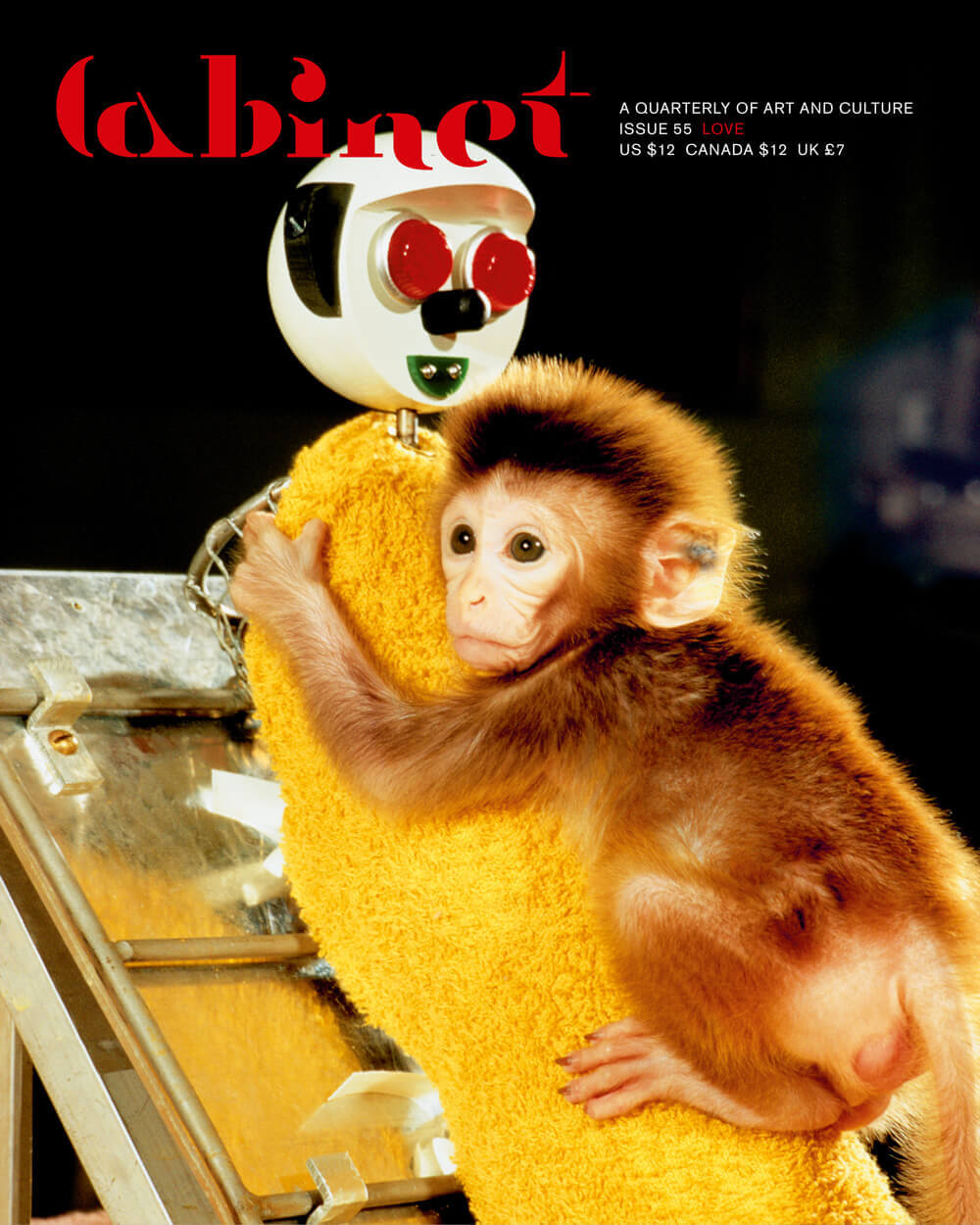Cover Story

Love and sorrow. Beginning in the early 1950s, University of Wisconsin psychologist Harry F. Harlow initiated a series of studies involving rhesus monkeys in his primate laboratory intended to investigate the mechanisms of maternal attachment in newborns. Interested in particular in the role of touch in forming the relationship between mother and child, Harlow devised a number of experimental scenarios, the best-known of which involved removing infant monkeys from their real mothers and substituting two artificial “mothers” in their place. One of these surrogates consisted simply of a cylindrical wire armature topped with an expressionless square block head and warmed by radiant heat; the other had a body made of wood cushioned with sponge rubber and was covered with a soft terry cloth and similarly warmed using a light bulb. It also had a more expressive face, complete with ears, nose, wide eyes, and smiling mouth. In one of the experiments, the wire mother was outfitted with a bottle for feeding while the cloth mother was not, and Harlow found that the baby monkeys spent only as much time with the wire mother as was necessary to feed themselves before returning to cuddle with the cloth-covered figure. Other experiments included introducing menacing toys into the cages to see which figure the terrified monkey would look to for comfort and creating “evil” mothers that were designed to be huggable but which would jerk violently to try to throw the babies off or, in one case, even project retractable sharp spikes from their bodies. Though widely credited for their contributions to the study of the behavioral and cognitive sciences, the experiments remain the subject of controversy. As John P. Gluck, one of Harlow’s former graduate students, observed in a 1997 paper: “On the one hand, his work on monkey cognition and social development fostered a view of the animals as having rich subjective lives filled with intention and emotion. On the other, he has been criticized for the conduct of research that seemed to ignore the ethical implications of his own discoveries.” In the image here, a monkey in one of Harlow’s experiments clings to its cloth mother. Photo Martin Rogers. Courtesy National Institutes of Health & Getty Images.
Spotted an error? Email us at corrections at cabinetmagazine dot org.
If you’ve enjoyed the free articles that we offer on our site, please consider subscribing to our nonprofit magazine. You get twelve online issues and unlimited access to all our archives.